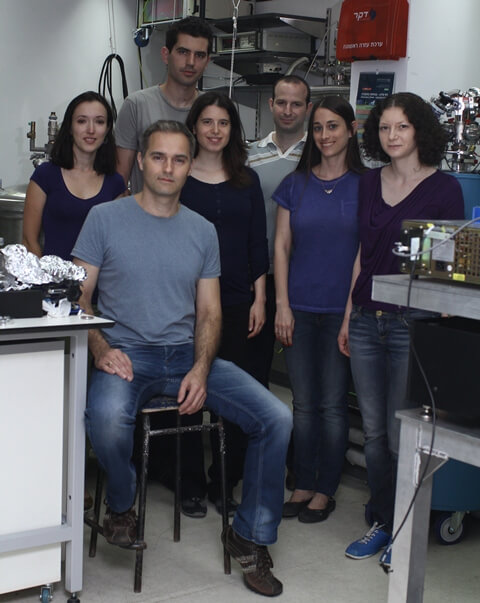Weizmann Institute scientists connected a single organic molecule to an electric circuit using a chain of atoms

The ongoing miniaturization trend of electronic devices encounters significant difficulties when it reaches nanometer sizes. The scientists know how to conduct electricity through a single molecule, and even utilize the structure of the molecule, to influence the behavior of the electric current passing through it (similar to the way in which the structure of a certain molecule used as medicine determines its chemical and medical activity). Thus, for example, it is possible to produce molecules that act as an electrical switch or as a kind of valve, allowing the current to flow in a preferred direction.
To use such molecules as electronic devices, scientists want to connect them to tiny electrical wires. But until now it was possible to pass an electric current through individual molecules only when they were trapped between two electrically conductive wires several orders of magnitude larger than them. Dr. Oren Tal and research students Tamar Yelin, Ran Vardimon and Natalia Koritz, from the Department of Chemical Physics at the Weizmann Institute of Science, recently took a significant step towards improving this ability. They managed to connect a single organic molecule to the smallest electric wire in nature: a chain of platinum metal atoms.
The scientists trapped a single molecule between two platinum wires much larger than the molecule - and immediately afterwards increased the distance between the wires. At this stage, platinum atoms are "pulled out" from the electrodes one by one, creating atomic chains connected to the molecule on the one hand and to one of the metal wires on the other. These findings were recently described in an article published in the scientific journal Nano Letters.
The researchers discovered that the electrical conduction of the new structure is not affected when the atomic chain is extended - a useful feature when you want to transmit an electrical signal over a distance, without its strength decreasing. In experiments with different organic molecules, it was discovered that the ability to wire a single organic molecule with the help of a chain of platinum atoms is not limited to a single molecular structure, and it is possible to use this method in working with different molecules.
Understanding the properties of the new structure and the nature of the chemical bond between the chain of atoms and the molecule was made possible thanks to the use of computational models developed by members of the research groups of Prof. Lior Krunik from the Department of Materials and Surfaces at the Weizmann Institute of Science, and Prof. Ferdinand Ebers from the Karlsruhe Institute of Technology in Germany.
The use of the new structure now allows scientists to study the electrical conduction properties of a single molecule when it is connected to an electrical wire of similar dimensions. The scientists say that using the special electronic properties of the contact area between nanometer structures from different families (that is, organic molecules and chains of metal atoms), may be a new tool for controlling the electric current at the atomic level.

One response
A very interesting article. Thanks.
An organic molecule that conducts current? I wonder how many of these can be connected
One to the other and in general how does it happen that an organic molecule has conduction properties?
It seems to me that the nano field is parallel to the computer field at the end of the 70s, whoever enters
to him today, he will guarantee himself a job for many years.